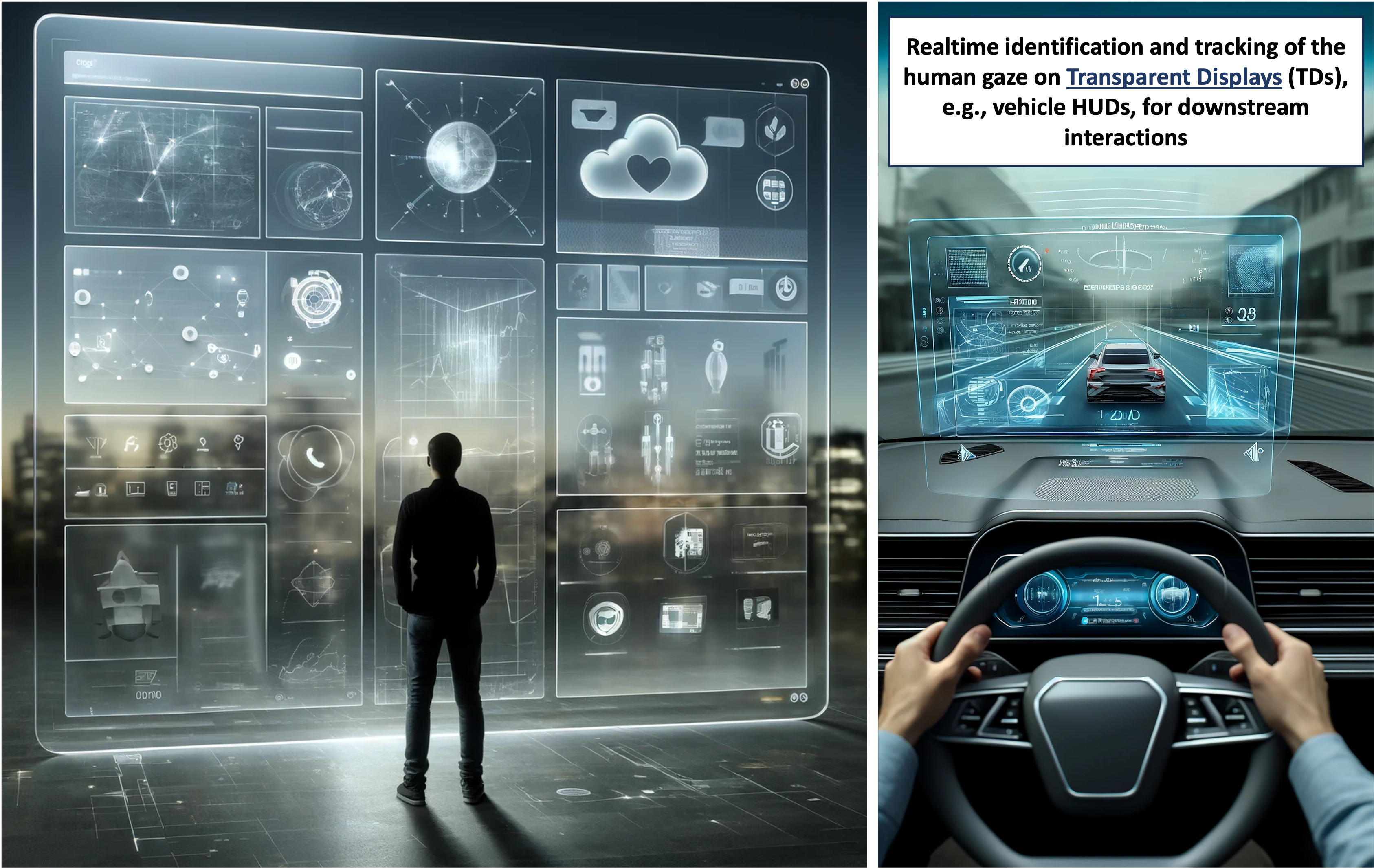Realtime Dynamic Gaze Target Tracking and Depth-Level Estimation

0

Sign in to get full access
This summary was produced with help from an AI and may contain inaccuracies - check out the links to read the original source documents!
Related Papers


0
Realtime Dynamic Gaze Target Tracking and Depth-Level Estimation
Esmaeil Seraj, Harsh Bhate, Walter Talamonti
The integration of Transparent Displays (TD) in various applications, such as Heads-Up Displays (HUDs) in vehicles, is a burgeoning field, poised to revolutionize user experiences. However, this innovation brings forth significant challenges in realtime human-device interaction, particularly in accurately identifying and tracking a user's gaze on dynamically changing TDs. In this paper, we present a two-fold robust and efficient systematic solution for realtime gaze monitoring, comprised of: (1) a tree-based algorithm for identifying and dynamically tracking gaze targets (i.e., moving, size-changing, and overlapping 2D content) projected on a transparent display, in realtime; (2) a multi-stream self-attention architecture to estimate the depth-level of human gaze from eye tracking data, to account for the display's transparency and preventing undesired interactions with the TD. We collected a real-world eye-tracking dataset to train and test our gaze monitoring system. We present extensive results and ablation studies, including inference experiments on System on Chip (SoC) evaluation boards, demonstrating our model's scalability, precision, and realtime feasibility in both static and dynamic contexts. Our solution marks a significant stride in enhancing next-generation user-device interaction and experience, setting a new benchmark for algorithmic gaze monitoring technology in dynamic transparent displays.
Read more6/28/2024


0
3D Gaze Tracking for Studying Collaborative Interactions in Mixed-Reality Environments
Eduardo Davalos, Yike Zhang, Ashwin T. S., Joyce H. Fonteles, Umesh Timalsina, Guatam Biswas
This study presents a novel framework for 3D gaze tracking tailored for mixed-reality settings, aimed at enhancing joint attention and collaborative efforts in team-based scenarios. Conventional gaze tracking, often limited by monocular cameras and traditional eye-tracking apparatus, struggles with simultaneous data synchronization and analysis from multiple participants in group contexts. Our proposed framework leverages state-of-the-art computer vision and machine learning techniques to overcome these obstacles, enabling precise 3D gaze estimation without dependence on specialized hardware or complex data fusion. Utilizing facial recognition and deep learning, the framework achieves real-time, tracking of gaze patterns across several individuals, addressing common depth estimation errors, and ensuring spatial and identity consistency within the dataset. Empirical results demonstrate the accuracy and reliability of our method in group environments. This provides mechanisms for significant advances in behavior and interaction analysis in educational and professional training applications in dynamic and unstructured environments.
Read more6/18/2024


0
FocusFlow: 3D Gaze-Depth Interaction in Virtual Reality Leveraging Active Visual Depth Manipulation
Chenyang Zhang, Tiansu Chen, Eric Shaffer, Elahe Soltanaghai
Gaze interaction presents a promising avenue in Virtual Reality (VR) due to its intuitive and efficient user experience. Yet, the depth control inherent in our visual system remains underutilized in current methods. In this study, we introduce FocusFlow, a hands-free interaction method that capitalizes on human visual depth perception within the 3D scenes of Virtual Reality. We first develop a binocular visual depth detection algorithm to understand eye input characteristics. We then propose a layer-based user interface and introduce the concept of 'Virtual Window' that offers an intuitive and robust gaze-depth VR interaction, despite the constraints of visual depth accuracy and precision spatially at further distances. Finally, to help novice users actively manipulate their visual depth, we propose two learning strategies that use different visual cues to help users master visual depth control. Our user studies on 24 participants demonstrate the usability of our proposed virtual window concept as a gaze-depth interaction method. In addition, our findings reveal that the user experience can be enhanced through an effective learning process with adaptive visual cues, helping users to develop muscle memory for this brand-new input mechanism. We conclude the paper by discussing strategies to optimize learning and potential research topics of gaze-depth interaction.
Read more5/8/2024

0
Focal Depth Estimation: A Calibration-Free, Subject- and Daytime Invariant Approach
Benedikt W. Hosp, Bjorn Severitt, Rajat Agarwala, Evgenia Rusak, Yannick Sauer, Siegfried Wahl
In an era where personalized technology is increasingly intertwined with daily life, traditional eye-tracking systems and autofocal glasses face a significant challenge: the need for frequent, user-specific calibration, which impedes their practicality. This study introduces a groundbreaking calibration-free method for estimating focal depth, leveraging machine learning techniques to analyze eye movement features within short sequences. Our approach, distinguished by its innovative use of LSTM networks and domain-specific feature engineering, achieves a mean absolute error (MAE) of less than 10 cm, setting a new focal depth estimation accuracy standard. This advancement promises to enhance the usability of autofocal glasses and pave the way for their seamless integration into extended reality environments, marking a significant leap forward in personalized visual technology.
Read more8/9/2024